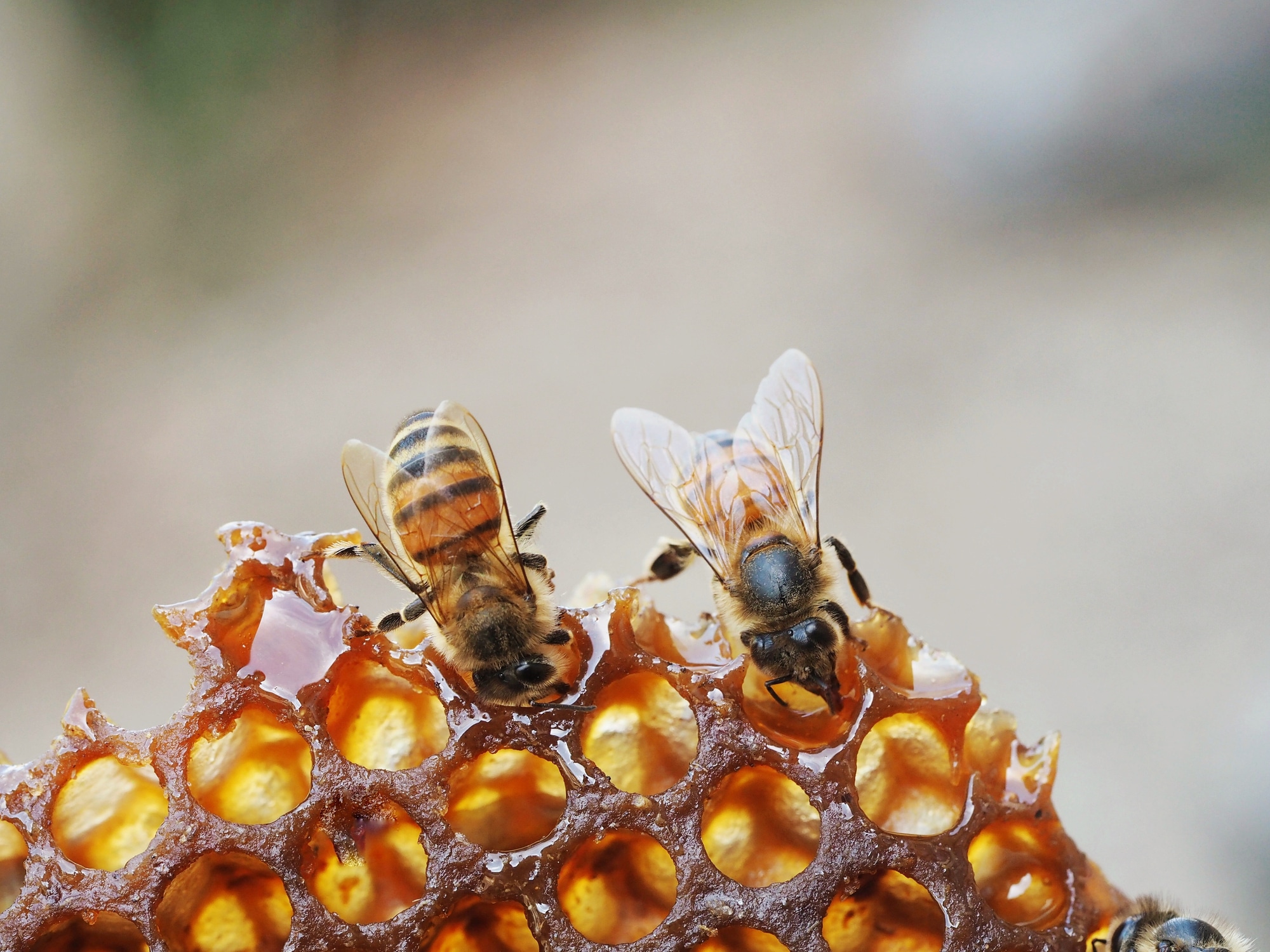
New Breed of Honeybees Offer Hope Against Commercial Bees’ Biggest Threat

Human-raised honeybees are in trouble, and the biggest threat they face is the varroa mite.
This is an eight-legged parasite that is smaller than a pinhead, Science explained. It harms bees by feeding on their fat and weakening their immune systems, and also by spreading viruses the bees are then less able to defend themselves against.
“The Varroa mite is the greatest threat to managed honey bee colonies globally,” Dr. Thomas O’Shea-Wheller of the Environment and Sustainability Institute at Exeter’s Penryn Campus in Cornwall said in a University of Exeter press release. “So far, new methods to control the mites—and the diseases that they carry—have had limited success, and the mites are becoming increasingly resistant to chemical treatments. It’s a ticking time-bomb.”
Luckily, O’Shea-Wheller and a team of U.S. Department of Agriculture (USDA) scientists have found a potential solution. In a paper published in Scientific Reports Thursday, they announced that they have bred honeybees to resist these pesky mites.
The USDA has spent the past 14 years breeding the “Pol-line” strain of honeybees, Science explained. These bees have many beneficial traits: they have large colonies, they produce lots of honey and they exhibit something called varroa-sensitive hygiene.

“Pol-line’s high mite resistance is based on their behavior for removing Varroa by expelling infested pupae—where Varroa mites reproduce—a trait called Varroa-sensitive hygiene (VSH),” study co-leader and USDA Agricultural Research Service entomologist Frank Rinkevich said in a USDA press release.
While the Pol-line bees were developed in 2014, this study marks the first time they were tested against conventional bees in a commercial setting. Starting in 2017, 173 colonies of Pol-line bees were compared to 193 colonies of regular bees, Science reported. Some of the bees were moved between states to pollinate different crops, traveling from Mississippi to South Dakota to California and back with slight variations.
“It’s probably the most demanding system you can place a colony of honeybees into,” O’Shea-Wheller told Science.
The researchers found that the Pol-line bees were 30 percent more likely to survive the frequent flying when compared to conventional bees. The bees were also exposed to different mite treatments. For colonies that received no treatment in the fall, 62.5 percent of Pol-line colonies survived the winter compared with only three percent of conventional colonies, according to USDA. When the colonies received two mite treatments, 72 percent of Pol-line colonies survived when compared with 56 percent of conventional colonies. Overall, 60 percent of Pol-line bees survived the winter compared with 26 percent of regular bees, University of Exeter said. The colonies of the Pol-line bees also had fewer cases of three viruses associated with varroa mites.
“By selectively breeding bees that identify and remove mites from their colonies, our study found a significant reduction in mite numbers, and crucially, a two-fold increase in colony survival,” O’Shea-Wheller told the University of Exeter.

Varroa mites have been the bane of U.S. beekeepers since they arrived from Southeast Asia in 1987, according to USDA. Because the mites originated in Asia, the European honeybees most commonly used in commercial operations do not have natural resistance to them, the University of Exeter explained. About 29 percent of bee colonies lose too many worker bees over the winter to remain viable in the spring, according to Science. This is because of various threats including pesticides and poor nutrition, but varroa mites are the leading concern. The success of the Pol-line bees in the new study offer a solution to beekeepers that doesn’t rely on chemical mite-killing treatments.
“It’s really encouraging, and I hope beekeepers pay attention,” University of Minnesota, Twin Cities bee breeder Marla Spivak, who was not involved with the study, told Science.

 233k
233k  41k
41k  Subscribe
Subscribe 